Asteroid mining: a second wind of mankind or an idle hope?
26th Dec 2023
Earth is becoming depleted of mineral resources and this is becoming a serious problem not only for our comfort but also for our survival. Scientists claim that there is a solution — asteroid mining, because, as it turns out, these stone wanderers are a real treasure trove of minerals. But is mining asteroids for resources realistically foreseeable in the future or are we just chasing an unattainable hope? Let’s figure it out.
What is asteroid mining?
Asteroid mining is similar to the extraction of minerals on Earth, with the only difference being that they are mined not from the bowels of our planet, but from the bowels of… an asteroid. The idea first appeared in science fiction, in the story Edison’s Conquest of Mars by Garrett P. Serviss, published in the New York Evening Journal in 1898.
However, the first serious scientific discussions of how to mine asteroids began only in the 1960s, when astronomers received an approximate answer to the question What are asteroids made of? These small rocky and/or metallic celestial bodies turned out to be very similar in composition to the terrestrial planets. This means that each ‘rock’ potentially contains a certain amount of valuable minerals, which we painstakingly mine on Earth. And there are millions of such objects in our Solar System. Is it worth missing out on this chance?
What minerals are in asteroids and are they worth mining?
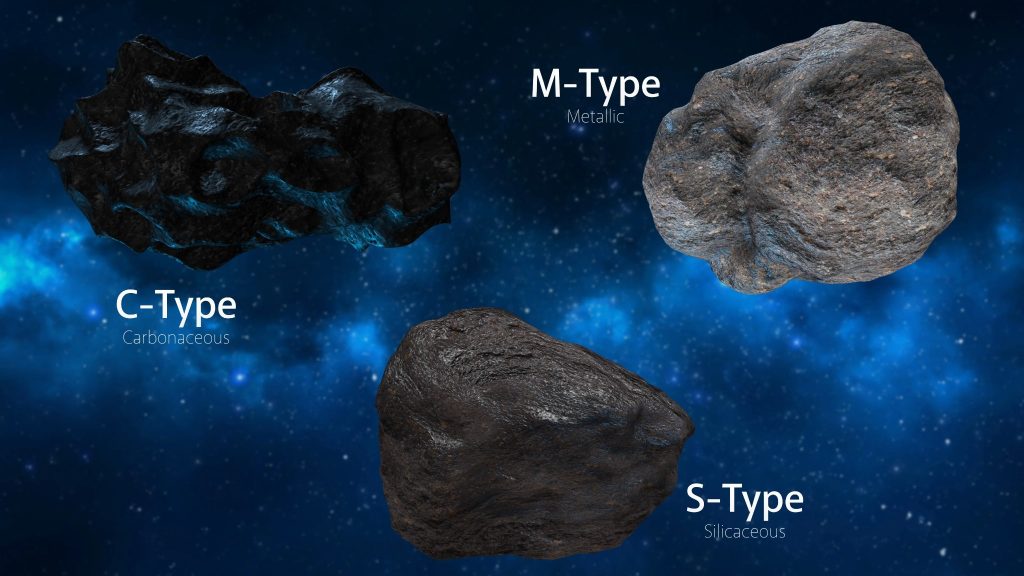
Asteroids are divided depending on their type, composition, and history. There are several classifications of these celestial bodies, according to their chemical and mineral composition, but one of the most common is the division into C-, S-, and M-types.
- C-type (carbonaceous) bodies consist mainly of carbon, water, organic compounds, and silicates. They make up about 75% of all known objects.
- S-type (silicaceous) objects are composed primarily of silicates, iron, and nickel. They are the second most common and make up about 17% of all known bodies.
- M-type (metallic) type consists mainly of iron and nickel, as well as valuable metals, including rare earth metals. They are the rarest and make up less than 10%.
Scientists have calculated that there are about 13,000 objects with a diameter of about 1 km lying in relative proximity to Earth, meaning that we can potentially mine them. Their collective size is approximately the size of our own planet. But these asteroids’ mineral content exceeds that of terrestrial minerals several times over. And those are untold riches.
Is there gold in asteroids?
Estimates of the amount of gold in asteroids vary, but one of the most cited sources states that the belt between Mars and Jupiter contains about 20 trillion tonnes of gold. This is 140 thousand times more than all the gold mined on Earth in history. In addition, scientists suggest that the amount of platinum in metal-type bodies can amount to billions of tonnes, while deposits of terrestrial platinum are limited to approximately 80 thousand tonnes.
Mining platinum on an asteroid, just platinum alone, would allow humanity to innovate in ways it has never done before! But is everything as simple as it sounds?
Is asteroid mining a real thing?
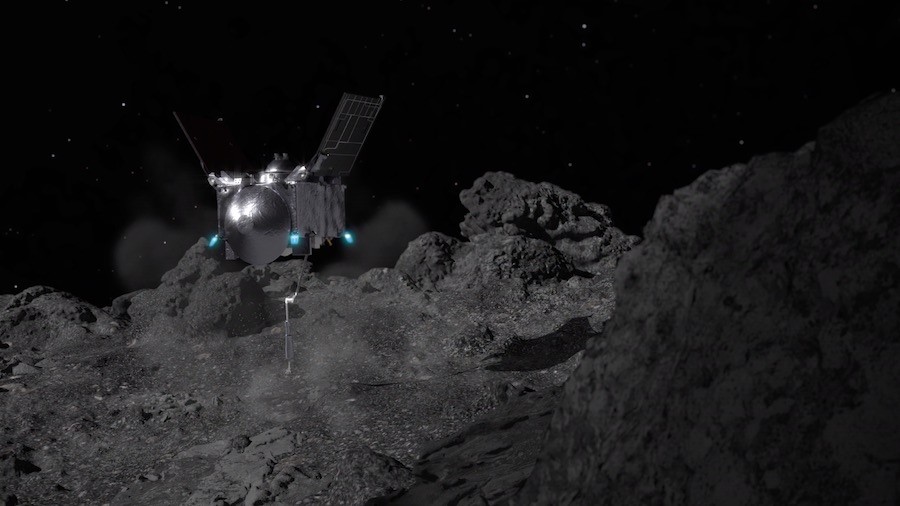
Mining asteroids is real, but not practical yet. There are several technical, economic, legal, and ethical difficulties. These are the high cost of mission flights, the unreliability of identifying objects suitable for mining, the difficulty of extracting and transporting resources in the space environment, potential conflicts, environmental consequences, and much more.
You’re probably asking, has an asteroid been mined? So far, everything is limited to research missions, the purpose of which is to study the object composition, as well as to evaluate the technical capabilities and difficulties of collecting ore with modern technologies.
For example, in December 2020, the Japanese Hayabusa2 mission successfully returned 5.4 grams of material from the Ryugu asteroid to Earth. In September 2023, NASA’s OSIRIS-REx mission brought back about 400 grams of powder and gravel from the Bennu asteroid.
So is NASA working on asteroid mining? So far, only for scientific purposes, but this does not mean that the industry is not developing. There are some young space mining companies, i.e., AstroForge, Trans Astra, AMC, Karman+ and others, that are developing innovative projects, receiving funding and support from various interested governments, corporations, and investors.
So, asteroid mineral extraction could become a real business, but when this happens will depend on how quickly the associated problems are solved. Let’s look at them in more detail.
Can you legally mine an asteroid?
There is no clear answer to this question yet. Under current international law, no one can claim ownership of an asteroid or any other celestial object. This follows from the Treaty on Principles Governing the Activities of States in the Exploration and Use of Outer Space, including the Moon and Other Celestial Bodies, signed in 1967.
However, this treaty does not prohibit the extraction and use of resources from asteroids, as long as this does not violate the peace and security in space. In the 2010s, the USA and Luxembourg already adopted national laws that answer the question of who has asteroid mining rights. However, these laws can be challenged by other countries who believe that the issue should be settled at the international level and rights distributed fairly among all interested parties.
Therefore, we need new legal norms and mechanisms that would take into account the interests and needs of all participants and could ensure sustainable and responsible development of the industry.
NASA came closest to resolving the issue after preparing the Artemis Accords, which were unofficially called the Space Constitution, in the fall of 2020. The document formulates general principles and rules of behaviour in space, in particular, Moon mining. However, the Artemis Accords do not have any legal force — they are only advisory in nature. So why can’t countries and space agencies come to an agreement?
Arguments against asteroid mining
The idea of space resource extraction has divided the public, business, and scientific communities into two camps: supporters and opponents. Arguments from both camps are not groundless, so the heated debate continues. Let’s start with the disadvantages of asteroid mining.
1. Disruption of the natural balance and order in space
Interfering with the structure of any celestial object could cause a change in its orbit or mass and increase the risk of its collision with our planet or other celestial bodies, which could lead to global disasters. Find out what consequences await us if an asteroid hits the Earth.
2. Potential conflicts and inequalities
Such an outcome is quite possible if some country, due to its more advanced technologies, takes possession of the largest amount of resources and begins to dictate its terms in geopolitics and economics.
3. Diverting attention and resources from solving pressing problems on Earth
Unfortunately, poverty, hunger, disease, lack of education, wars, and climate problems are not going away. So, the question of ethics arises. Is it worth spending billions of dollars searching for and extracting resources in space if this money can be used to improve the lives and well-being of people on Earth?
Asteroid mining benefits
While opponents are sounding the alarm, supporters of gaining access to space resources counter their adversaries with many obvious advantages, which, in their opinion, outweigh the disadvantages:
1. Overcoming the scarcity of Earth resources
Continuous extraction of resources from the Earth is depleting our resources, and someday, their quantity will no longer be sufficient to satisfy the technical progress needs. Just think about it, an electric car, which we praise for being environmentally friendly, needs a lot of cobalt, nickel, and six times more minerals to create it when compared to a regular car. Cobalt is also needed for wind power plants, and nickel is necessary for solar panels.
The International Energy Agency expects that by 2050, the demand for these rare metals will increase 4–6 times. Already today, the price of cobalt per tonne is approximately 33,000 dollars, and nickel costs 20,000 dollars per tonne; with a decrease in reserves, the price of raw materials will only increase. The same situation applies to precious metals. Mining resources beyond the Earth can cover this shortage.
2. Ecology preservation
Industries involved in the extraction of resources, in particular energy, emit tonnes of toxic substances that enter the air, soil, and water, having a detrimental effect on plants, animals and people. As a result, we are losing entire landscapes that could be wonderful places for living. How would mining an asteroid affect how we use it to get energy? If space resources are used to produce clean and renewable energy, such as solar, wind, hydrogen, etc., this can help solve not only the energy crisis but also reduce greenhouse gas emissions and stop climate change.
3. Impact on the economy
Space mining will require the creation of new markets and industries related to the extraction, transportation, processing, and sale of resources. This will lead to increased income, investment, taxes, employment, and innovation in the space sector, as well as in related sectors such as science, technology, industry, education, etc.
In addition, an increase in the amount of resources will increase the availability of products and services and, consequently, will lead to a decrease in their final cost for the consumer.
4. Scientific development
Exploration and resource expedition flights are an excellent springboard for further expansion into space and the answer to the question of How can asteroid extraction support the long-term exploration of the Solar system? Asteroids have existed for billions of years, and their minerals can tell us about the formation and development of the Solar System and, perhaps, even shed light on the existence of extraterrestrial life.
How does asteroid mining work?
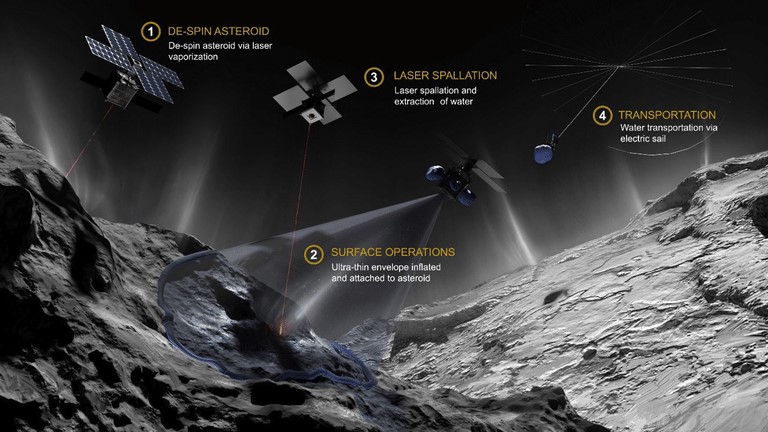
Let’s imagine for a moment that the legal, ethical and economic aspects are settled, so how can we mine asteroids now? Broadly speaking, the process can be divided into four stages.
1. Resource exploration and evaluation
The first stage is determining which bodies have the greatest value and availability for mining. For this purpose, telescopes, satellites, probes, and other means of observation and analysis are used. Also, the trajectory, speed and orbit of the object, as well as its physical and chemical properties, are determined at this stage. Of greatest interest are near-Earth objects, which pass closer to our planet and have a smaller size and mass because mining from a distant ‘rock’ is very difficult and expensive.
2. Mission preparation and launch
At this stage, it is necessary to prepare the spacecraft and crew (if this is a manned mission), provide it with all the necessary equipment for extracting and transporting resources, reach the mission object, and establish contact with it.
3. Extraction and processing
Now comes the most important part. It is necessary to extract useful substances and prepare them for further use. For this purpose, the most optimal asteroid extraction technology is selected. This can be drilling, cutting, crushing, separation, mixing, melting, cleaning, etc. Also at this stage, materials can be converted into more convenient forms, for example, fuel, water, oxygen, etc. At the same time, one should consider that there is almost no gravity, so mining equipment and astronaut miners will have to use grapples to anchor themselves to the ground. However, the lack of gravity is an advantage as it does not require much power to move the mined material.
4. Delivery and distribution
This stage includes loading and transportation of the obtained products from the mined object to Earth or other destinations, for example, space stations, lunar bases, etc. In the future, the products can be sold on the asteroid mining market or used for scientific, industrial, or other purposes.
Objectively, though, we cannot yet implement any of these stages in full. We simply do not have enough technology.
What is the future of asteroid mining?
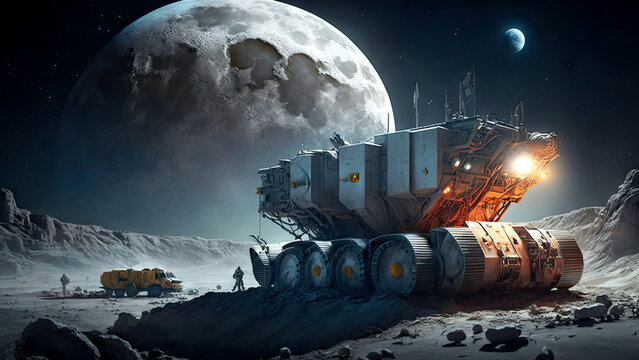
According to a recent study, in three to four decades, the production of some metals in space could surpass their production on our planet. However, asteroid mineral extraction still remains hypothetical, mainly due to its exorbitant cost.
While specific estimates of the commercial production costs remain unclear, NASA’s OSIRIS-REx mission can be taken as an example. The delivery of 400 g of material from the near-Earth asteroid Bennu cost approximately 800 million US dollars and took seven years.
In 2018 and 2019, Planetary Resources and Deep Space Industries were unable to finance such high development costs independently and, as a result, were absorbed by larger players.
However, even with huge investments, asteroid extraction benefits can be significantly higher. For example, Asterank company, which estimates the potential value of more than 6,000 objects currently tracked by NASA, has determined that mining just the ten most profitable asteroids — that is, those closest to Earth and the most valuable, would yield a profit of about 1.5 trillion US dollars. And there is also great potential for further expansion.
According to currently available data, one of the asteroids, 16 Psyche, contains gold worth 700 quintillion US dollars, which is about 93 billion for each inhabitant of the Earth. Well, we just have to wait 30–40 years until asteroid mining becomes a usual practice, and we become dollar billionaires… if inflation doesn’t get in the way).
Resources
- How asteroids can save mankind
https://www.911metallurgist.com/keep-mining/ - Michael Booth, Date: December 21, 1995. THE FUTURE OF SPACE MINING
https://web.archive.org/web/20120124225451/http://www1.american.edu/TED/spacemin.htm - The Role of Near-Earth Asteroids in Long-Term Platinum Supply Brad R. Blair Economics Colorado School of Mines May 5, 2000
https://web.archive.org/web/20111212202154/http://www.nss.org/settlement/asteroids/RoleOfNearEarthAsteroidsInLongTermPlatinumSupply.pdf - Mining rocks in orbit could aid deep space exploration/ November 10, 2020. University of Edinburgh
https://www.sciencedaily.com/releases/2020/11/201110112534.htm - NASA. Asteroids: Facts
https://science.nasa.gov/solar-system/asteroids/facts/ - ESA. Asteroids: Structure and composition of asteroids
https://www.esa.int/Science_Exploration/Space_Science/Asteroids_Structure_and_composition_of_asteroids - The Osiris Rex mission
https://www.asteroidmission.org/about-mission/
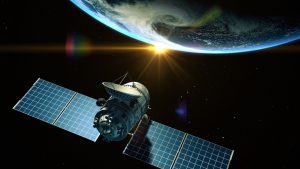

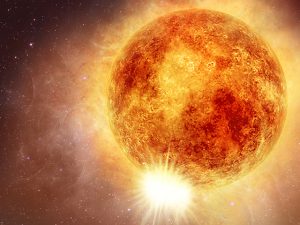



Thank you for your comment! It will be visible on the site after moderation.